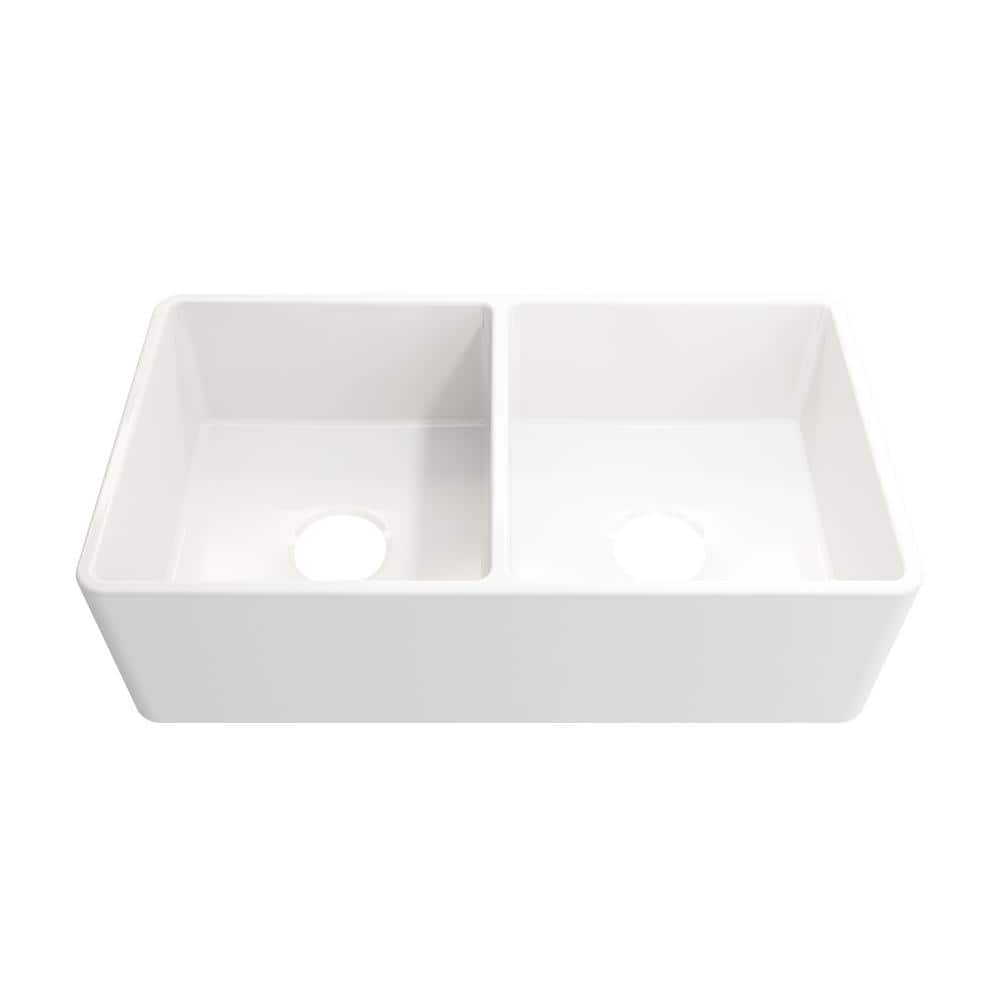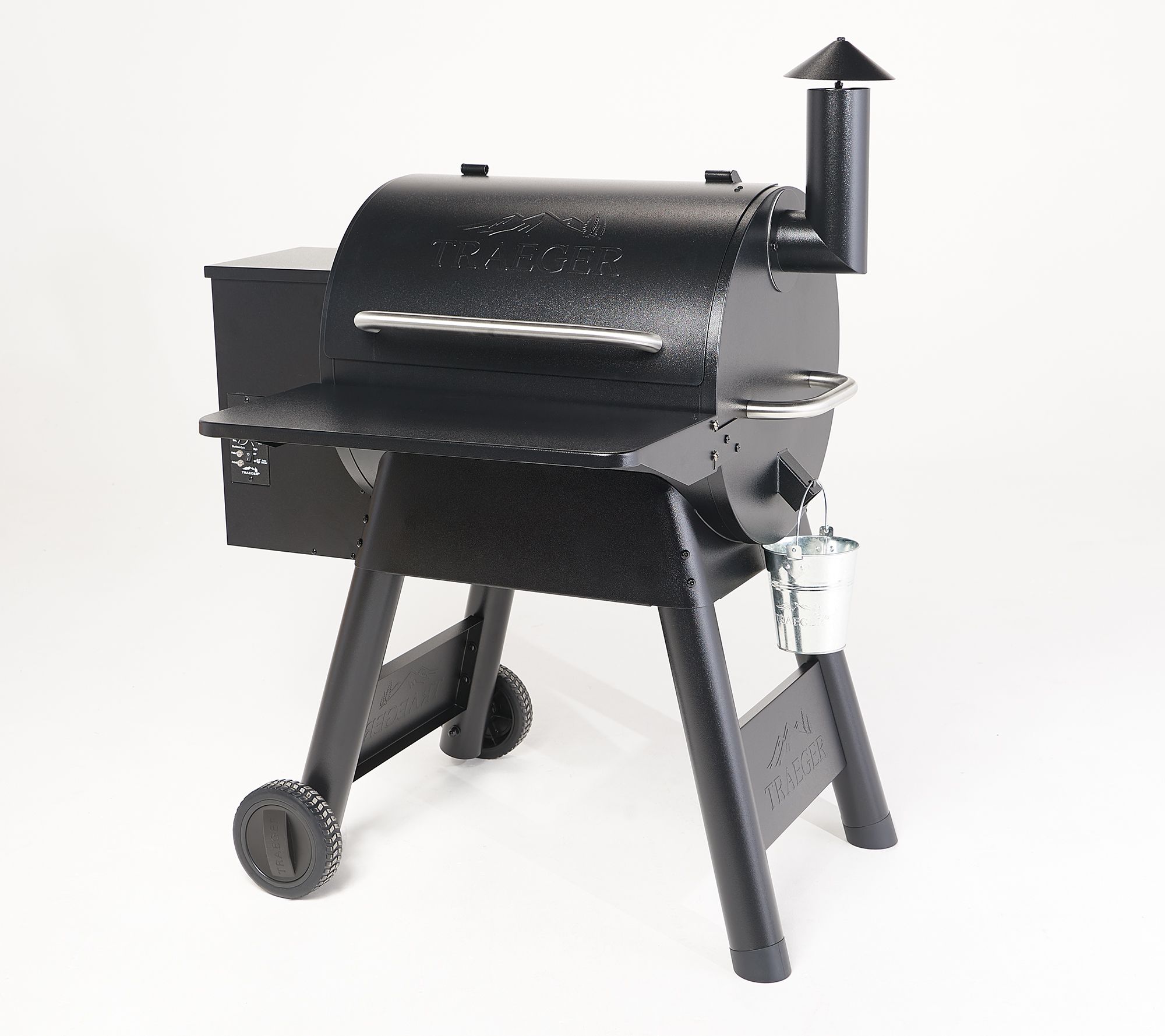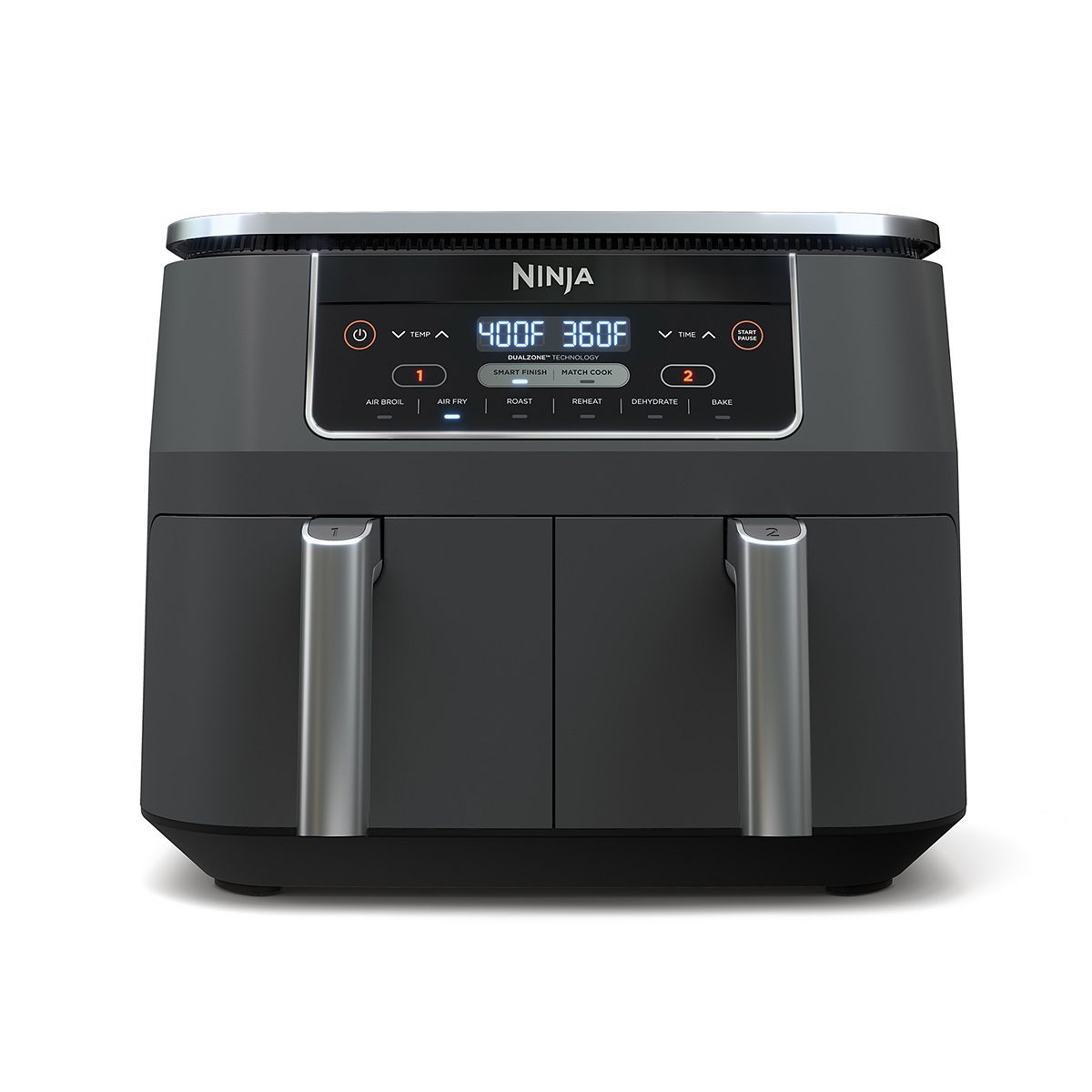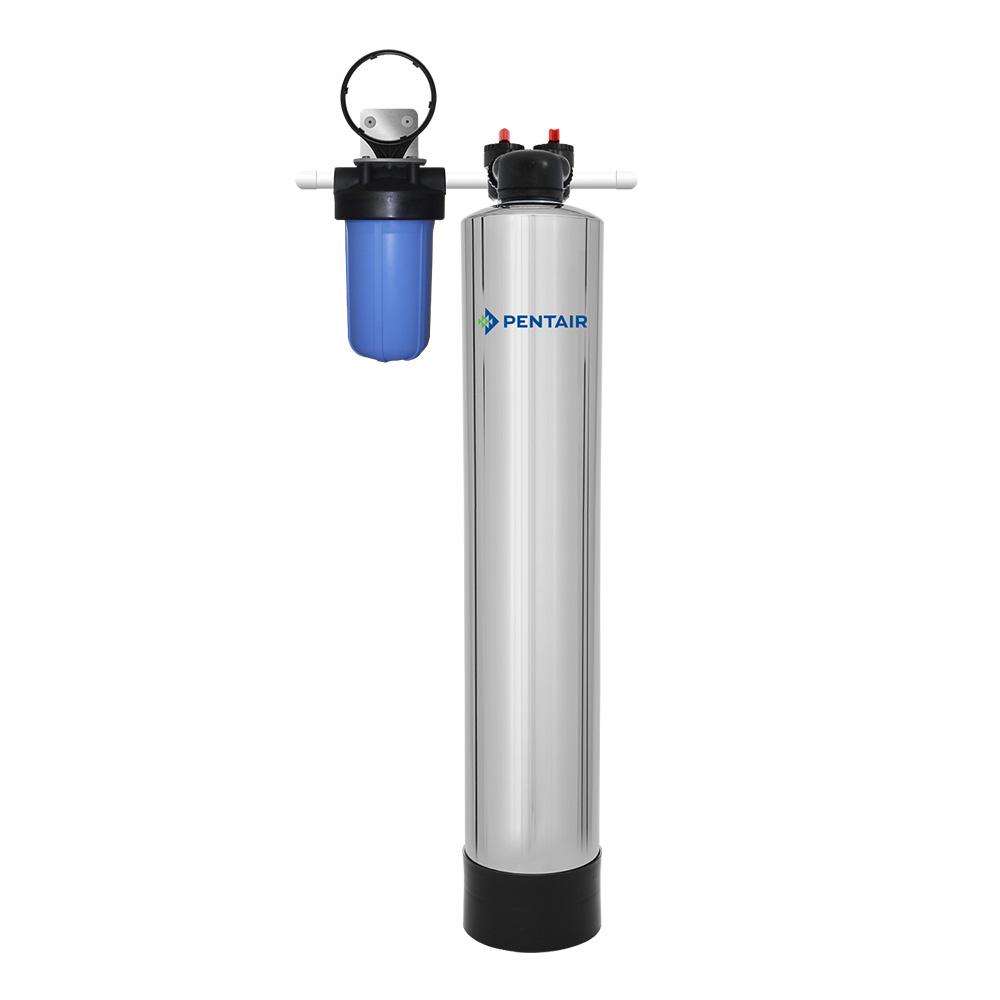Glacier Bay Farmhouse Apron-Front Fireclay 33 in. Double Bowl Kitchen Sink in White with Bottom Grid
33 in. L x 19 in. W x 10 in. D. Minimum cabinet size 36 in. Features solid wall construction for added strength. Fine fireclay is chip, crack, and heat resistant (up to 2000°F).
Glacier Bay Fireclay farmhouse sinks are made from fine fireclay and ship with an matching bottom grid. Sinks are made from organic materials using high-tech casting methods and feature solid wall construction for added strength that makes each sink compatible with standard size flanges and strainers. Designed to resist stains, chips, scratches or cracks, these fireclay sinks are made to hold up to the wear-and-tear of a busy kitchen. As an added bonus they are heat resistant (up to 2000°F).
- Apron-front, fireclay farmhouse sink fully glazed on all sides with 100% non-porous surface designed to resist stains and build-up of mineral deposits
- Sinks include matching grid set
- Minimum cabinet size is 36 in.
- Heat resistant up to 2000°F and will resist chips and scratches for increased durability in the kitchen
- Limited lifetime warranty
- Fireclay sinks are made from 100% organic materials using high-pressure casting
- Sinks can fit a standard strainer or garbage disposal flange (no special adapters needed) both sold separately
- To ensure a perfect fit for your countertop and preferred installation setting, it is advised to use the sink itself as the guide for cutting countertops as there can be a there is +- ½” difference in dimensions on all fireclay sinks due to handmade nature of the product and the firing process.
Additional information
| Actual Left to Right Length (In.) | 33 |
|---|---|
| Bowl Top to Bottom Depth (in.) | 9 |
| Cut-Out Below Counter Depth (in.) | 10 |
| Cut-Out Depth (in.) | 16.5 |
| Cut-Out Width (in.) | 33 |
| Kitchen Sink Front to Back Width (In.) | 18 |
| Left Inner Bowl Below Counter Depth (in.) | 9 |
| Left Inner Bowl Front to Back Width (in.) | 16.5 |
| Left Inner Bowl Left to Right Length (in.) | 15.5 |
| Panel Height (in.) | 10 |
| Panel Width (in.) | 33 |
| Right Inner Bowl Below Counter Depth (in.) | 9 |
| Right Inner Bowl Front to Back Width (in.) | 16.5 |
| Right Inner Bowl Left to Right Length (in.) | 15.5 |
| Certifications and Listings | IAPMO Certified |
| Manufacturer Warranty | Limited Lifetime |






by Larry
I love this sink! I like the short divide because I can still wash large pans but they are still down inside the sink with a clean side for drying.
by James
Really easy to install. I would recommend it to anyone. Looks great!!
by Tracy
Beautiful sink ! So happy with its depth and how easy it is to clean. It is a sturdy and heavy sink, but easy to install. Love the metal grid that comes with it as well.
by Chester
This Sink was easy to install. It is very very beautiful sink. I would recommend this product to friends and family. We didn’t want an under mount sink. We plan on changing the counter top. I highly recommend this this product. The sink arrived well packaged and not damaged. Shipping was within a three day window. The sink is glossy and smooth. There is nothing to dislike about this sink. The has been installed now for two months. This sink is above my expectation.
by Ewatson
The sink is beautiful, bright white – but HEAVY. Our contractor had to build a support frame for it within our farmhouse sink cabinet to accommodate the weight. It really is stunning, well made, and the smooth/glazed finish is lovely.
by David
Exactly what I wanted in a sink! Looks beautiful and was easy to install.
by Steve
The drawing rack causes items to fall over and through it.